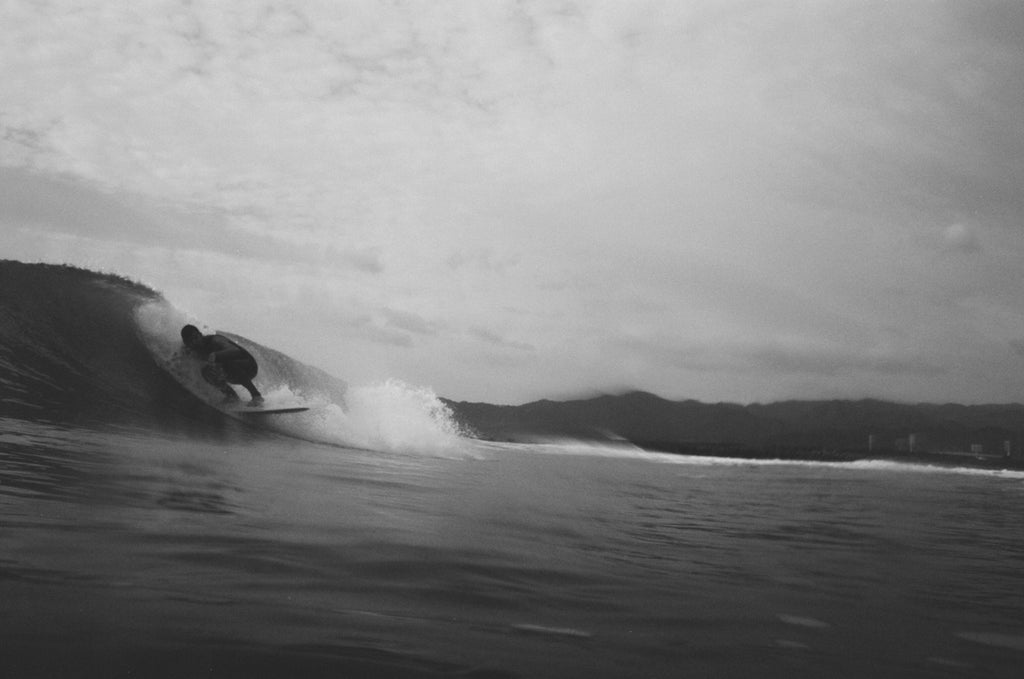Miyazaki | Entering Tsuyu
Keysuke Masuda and I met for the first time at Midori So on a Wednesday during an impromptu photo shoot for some Japanese magazine. After he poured a geisha coffee for everyone, he told me about a final swell on his radar before the return of tsuyu season, an annual weather front that blocks low-pressure systems from passing over Japan, causing endless rain. During tsuyu, he said, the ocean would go to sleep until the arrival of typhoons in August.
To no surprise, Miyazaki came up in the conversation; it is known for having some of the most consistent surf in Japan. Keysuke had been to the spot and scored it once before. I’d surfed a handful of breaks around Japan, but had somehow never made it to Miyazaki. A couple hours later, he texted me a photo of the forecast. We didn’t hesitate to book our flights, which would depart a couple of days later to align with a twenty-four-hour window of the potential surf.


Our first day there, it was pouring rain on-and-off. We met a few local friends and surfed waves that were chest-high, sloppy and fat due to the full moon high tide. The entrance to tsuyu that everyone had been talking about, surfers and non-surfers alike, was evident. With no wind at times, the heavy rain gave the ocean’s surface a fur-like texture in which one’s mind was easily lost. Once I decided to switch board for camera, it mostly just drizzled. “Tomorrow it will pick up,” said everyone.
The sun rose at 4:30 am, but the tide would only start to be good at the river mouth around 6, so we checked it then: occasionally thigh-high, but glassy and offshore, even peeling at times. If you were going finless, it was still fun — yet even smaller than when we arrived. For some reason, despite the dismal conditions, we didn’t feel the need to get out of the water. We grew hungry and tired, but it didn’t seem to matter. All of our senses seemed to be drowned out, dissolved like salt in the water. The conversations afterward kept coming back to the air in Miyazaki tasting somehow different. Miyazaki was clearly a place where people’s thoughts and feelings revolve around the ocean, the waves: some did it for the surfing, but I got the sense that “surfers” were a minority within that group.
The waves here could be better than Chiba or Hokkaido or Amami — or worse. Miyazaki is known as a surf destination in Japan, but coming from California, it really didn’t feel like one to me. I couldn’t quite figure it out. Remembering near-perfect, head high plus waves in Chiba and Hokkaido, I questioned what impetus I might have for coming back to Miyazaki ever again — why this place, as opposed to the other Japanese spots I’ve come to know and love? A week after returning to Tokyo, I got my film back. I had already seen a few phone pictures and digital shots from our trip. But seeing the images burned onto film triggered in my mind the aftertaste of Miyazaki air, and the memory of its people’s energy. I would be back.





